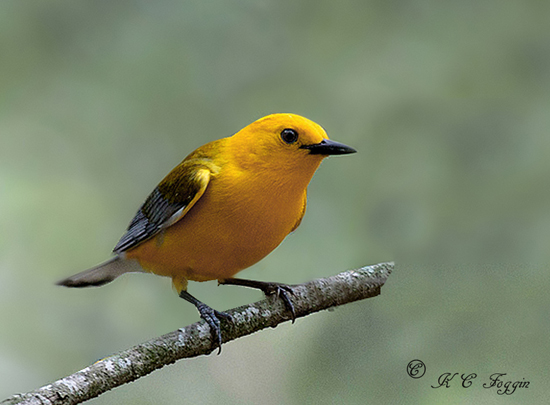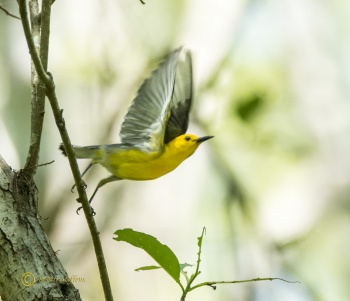Nutcracker (talk | contribs) m (link corrected) |
Aloktewari (talk | contribs) (copyright symbol to images) |
||
| Line 1: | Line 1: | ||
| − | [[Image:050817prothontarywarbler1aOPUS.jpg|thumb|550px|right|Photo by {{user|KC+Foggin|KC Foggin}}<br />Myrtle Beach, [[:Category:South Carolina|SC]], [[USA]], May 2017]] | + | [[Image:050817prothontarywarbler1aOPUS.jpg|thumb|550px|right|Photo © by {{user|KC+Foggin|KC Foggin}}<br />Myrtle Beach, [[:Category:South Carolina|SC]], [[USA]], May 2017]] |
;[[:Category:Protonotaria|Protonotaria]] citrea | ;[[:Category:Protonotaria|Protonotaria]] citrea | ||
==Identification== | ==Identification== | ||
| Line 9: | Line 9: | ||
==Distribution== | ==Distribution== | ||
| − | [[Image:Prothonatary Warbler 73 7454.jpg|thumb|350px|right|Photo by {{user|STEFFRO1|STEFFRO1}}<br />Collins Creek Landing, Murrells Inlet, [[South Carolina]], May 2017]] | + | [[Image:Prothonatary Warbler 73 7454.jpg|thumb|350px|right|Photo © by {{user|STEFFRO1|STEFFRO1}}<br />Collins Creek Landing, Murrells Inlet, [[South Carolina]], May 2017]] |
Main breeding range from southwest [[Iowa]] east to [[Ohio]] south to eastern [[Texas]] east to [[Alabama]] and from southern [[New Jersey]] south to northern [[Florida]]. Mostly absent from the Appalachians. Small local populations in [[Pennsylvania]], [[New York]], [[Massachusetts]], [[Connecticut]] and [[Vermont]]. It winters in the [[West Indies]], [[Central America]] and northern [[South America]]. Rare vagrant to California, Nevada, Utah, Colorado, Arizona and New Mexico. | Main breeding range from southwest [[Iowa]] east to [[Ohio]] south to eastern [[Texas]] east to [[Alabama]] and from southern [[New Jersey]] south to northern [[Florida]]. Mostly absent from the Appalachians. Small local populations in [[Pennsylvania]], [[New York]], [[Massachusetts]], [[Connecticut]] and [[Vermont]]. It winters in the [[West Indies]], [[Central America]] and northern [[South America]]. Rare vagrant to California, Nevada, Utah, Colorado, Arizona and New Mexico. | ||
Revision as of 16:57, 22 August 2019
- Protonotaria citrea
Identification
Also known as the "Golden Swamp Warbler". The male is gold and has blue-grey wings, the female appears slightly duller. 13 cm long and weighs 12.5 g. Its back is olive with a blue-grey tail, yellow underparts, a relatively long pointed bill and black legs. The adult male has a bright orange-yellow head; females and immature birds are duller and have a yellow head. ' The call is a tsweet, twseet, twseet, twseet.
Distribution
Main breeding range from southwest Iowa east to Ohio south to eastern Texas east to Alabama and from southern New Jersey south to northern Florida. Mostly absent from the Appalachians. Small local populations in Pennsylvania, New York, Massachusetts, Connecticut and Vermont. It winters in the West Indies, Central America and northern South America. Rare vagrant to California, Nevada, Utah, Colorado, Arizona and New Mexico.
Taxonomy
This is a monotypic species[1].
Habitat
Wooded swamps and other wet deciduous habitats. The preferred foraging habitat is dense, woody streams.[2]
Behaviour
This bird forages in low foliage for snails and insects. It makes its nest in a cavity, sometimes using old holes from the Downy Woodpecker. The male makes several incomplete nests while the female makes the nest which is to be used.
The Prothonotary Warbler forages actively in low foliage, mainly for insects and snails. It breeds in hardwood swamps, nesting in a cavity, sometimes using old Downy Woodpecker holes. The male often builds several incomplete unused nests in his territory; the female builds the real nest.
They are sometimes but not often parasitized by the Brown-headed Cowbird (Molothrus ater), or outcompeted for nest sites by the House Wren (Troglodytes aedon).
References
- Clements, J. F., T. S. Schulenberg, M. J. Iliff, D. Roberson, T. A. Fredericks, B. L. Sullivan, and C. L. Wood. 2016. The eBird/Clements checklist of birds of the world: v2016, with updates to August 2016. Downloaded from http://www.birds.cornell.edu/clementschecklist/download/
- Wikipedia
Recommended Citation
- BirdForum Opus contributors. (2024) Prothonotary Warbler. In: BirdForum, the forum for wild birds and birding. Retrieved 28 April 2024 from https://www.birdforum.net/opus/Prothonotary_Warbler





